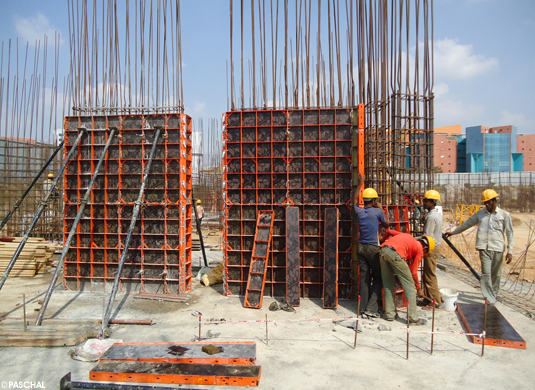What to Expect in the Coming Years
Commercial metal roofing has become a cornerstone of modern commercial construction, valued for its durability, versatility, and sustainability. As businesses prioritise energy efficiency and environmental compliance, the demand for advanced metal roofing solutions continues to rise. This article explores the key trends expected to shape the commercial metal roofing industry in the coming years.
Increased Demand for Sustainability in Commercial Roofing
Eco-Friendly Materials and Practices
Sustainability is no longer optional in commercial construction. Metal roofs, made primarily from recyclable materials, align with the industry’s push for greener practices. The longevity of metal roofing systems also reduces waste, contributing to a lower environmental impact.
Energy-Efficient Roofing Systems
Reflective coatings and innovative designs allow metal roofs to reduce heat absorption, cutting down on energy costs for commercial buildings. This makes them ideal for achieving energy efficiency targets in office complexes, warehouses, and retail centres.
Compliance with Green Building Standards
Environmental certifications such as LEED and Green Star have become essential benchmarks for commercial projects. Metal roofs contribute significantly to achieving these standards by enhancing energy efficiency, reducing material waste, and supporting renewable energy initiatives.
Innovations in Metal Roofing Technology
Smart Roofing Solutions
The integration of IoT technology is revolutionising commercial roofing. Smart roofs equipped with sensors can monitor temperature, detect moisture, and assess weather impacts in real time. These systems help facility managers anticipate maintenance needs, ensuring longer roof lifespans.
Advanced Coatings and Surface Treatments
Metal roofing manufacturers are developing coatings that improve resistance to UV rays, corrosion, and even pollution. Self-cleaning surfaces are gaining traction, particularly in regions prone to dust and debris, ensuring roofs maintain their appearance and functionality over time.
Adoption of Prefabricated Metal Roofing
Prefabricated roofing systems are streamlining the construction process for large-scale projects. By manufacturing components off-site, companies can achieve greater precision, faster installations, and reduced material waste, meeting tight project deadlines with ease.
Growth in Solar-Integrated Metal Roofing
Seamless Integration of Solar Panels
Metal roofs are increasingly being designed to accommodate solar panels, offering businesses the opportunity to generate renewable energy on-site. Standing seam designs, in particular, provide ideal platforms for solar integration without compromising the roof’s structural integrity.
Government Incentives for Renewable Energy
Governments worldwide are incentivising the adoption of solar technology in commercial buildings. In Australia, schemes like Small-scale Technology Certificates (STCs) are encouraging businesses to invest in solar-integrated metal roofing systems.
Battery Storage and Smart Energy Management
The future lies in combining solar roofs with advanced battery storage systems. This enables businesses to store excess energy, ensuring uninterrupted power supply and lowering reliance on traditional energy sources.
Evolving Design Trends in Commercial Metal Roofing
Modern Aesthetics in Commercial Architecture
Metal roofs are evolving to match the sleek designs of contemporary commercial buildings. Standing seam systems, flat panels, and bold colour customisations are enabling architects to create visually striking and functional structures.
Functional Designs for Climate Adaptation
As climate change continues to pose challenges, metal roofing designs are incorporating features such as integrated ventilation systems and enhanced water drainage solutions to cope with extreme weather conditions.
Blending Practicality with Brand Identity
Businesses are using customised metal roofing designs to reflect their corporate identities. From unique colour schemes to embossed logos, metal roofs are becoming a canvas for creativity in commercial construction.
Expanding Applications of Metal Roofing in Commercial Projects
Warehousing and Industrial Facilities
Metal roofs are a natural fit for warehouses and industrial spaces due to their durability and low maintenance requirements. Their ability to span large areas makes them ideal for logistics hubs and manufacturing facilities.
Retail and Office Complexes
In commercial complexes, metal roofs offer a balance of aesthetic appeal and functional benefits, such as energy efficiency and low operational costs. This makes them a popular choice for malls, offices, and high-rise buildings.
Infrastructure and Public Buildings
From hospitals and schools to transport terminals, metal roofing is becoming a staple in public infrastructure projects. Its long lifespan and ability to withstand heavy usage make it a reliable choice for these demanding environments.
Challenges Facing the Commercial Metal Roofing Industry
Rising Material Costs
The volatility of global supply chains has led to increased costs for raw materials. To address this, manufacturers are exploring cost-effective alternatives without compromising quality or performance.
Labour Shortages
The shortage of skilled roofers poses a challenge to the timely completion of commercial projects. Training programs and incentives are essential to attract and retain talent in the roofing industry.
Climate Change and Extreme Weather
The unpredictability of weather conditions necessitates innovations in roofing materials. Companies are investing in research to develop products capable of withstanding hurricanes, heatwaves, and heavy rainfall.
The Future of the Commercial Metal Roofing Industry
Increased Focus on Retrofitting Existing Buildings
With ageing infrastructure in need of upgrades, metal roofs are becoming a go-to solution for retrofitting. They offer improved energy efficiency and durability, making them a cost-effective choice for older commercial buildings.
Collaboration Across Sectors
Partnerships between roofing manufacturers, energy companies, and tech firms are driving innovation. Joint efforts are leading to advancements in solar integration, smart systems, and sustainable designs.
Market Expansion in Developing Regions
Emerging economies are experiencing rapid commercial development, creating opportunities for the metal roofing industry. Affordable, scalable, and durable solutions will be critical to meeting the needs of these markets.
Conclusion
The commercial metal roofing industry is poised for significant growth and transformation in the coming years. With advancements in sustainability, technology, and design, metal roofs will remain a cornerstone of modern commercial construction. By embracing these trends, businesses can stay ahead in a competitive and evolving market.













